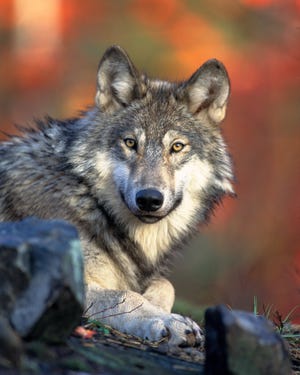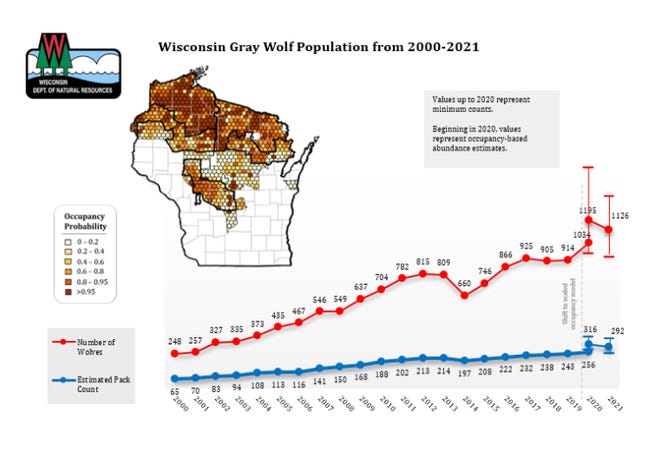DNR extends comment period for draft wolf management plan in Wisconsin
The DNR will accept public comments on the draft Wisconsin wolf management plan through Feb. 28. The plan has not been updated since 2007.
 Paul A. Smith
Paul A. Smith

The Department of Natural Resources has extended by seven weeks the period for public review and comment on the draft Wisconsin Wolf Management Plan.
The proposed plan was released Nov. 10 and originally scheduled for a 60-day public comment period to end Jan. 10.
But after representatives of some conservation groups and individuals asked for more time, the DNR announced it would extend the period to Feb. 28.
The extension is intended to allow more time for the public to review the details of the plan and share feedback on this important item, the DNR said in a statement.
The state’s current wolf management plan was written in 1999 and modified slightly in 2007. It is widely considered outdated.
The public review and comment period is a key opportunity for the public to share thoughts on the proposed wolf management plan, according to the DNR.
The agency said it will review and consider all feedback submitted during the comment period while preparing the final draft of the proposed wolf management plan.
Wolves were native to Wisconsin but were extirpated in the late 1950s or early 1960s after many years of bounties, poisonings and unregulated hunting. After protections for wolves were increased, including through the Endangered Species Act in 1973, wolves began to disperse to Wisconsin from a population in northern Minnesota.

The Wisconsin population of wolves was estimated at 25 in 1980, 34 in 1990, 248 in 2000, 704 in 2010 and 972 in early 2022, according to DNR reports.
The draft management plan “lays out a holistic approach to ensuring the state’s wolf population remains healthy and secure while balancing the diverse interests of the public,” according to the DNR.
The agency said in a statement the proposed plan was developed in consideration of many factors, including public input, consultations with Wisconsin’s tribal nations, scientific literature reviews, a study on current public attitudes towards wolves and potential outcomes of various management decisions.
The draft plan, according to the DNR, aims to balance tradeoffs between three main objectives: ensuring a healthy and sustainable wolf population to fulfill its ecological role; addressing and reducing wolf-related conflicts; and providing multiple benefits associated with the wolf population, including hunting, trapping and sightseeing.
In addition, the draft plan details proposals to increase public understanding of wolves, identify important scientific research to be conducted and outline steps to ensure collaboration on science-based wolf management in Wisconsin.
As in the past, the draft plan would require DNR staff to monitor wolves each year and address wolf-related conflict as well as continue to support and conduct scientific research and science-based decision-making.
Collaboration with other agencies, tribal nations, stakeholder groups and the public on items of mutual importance remains a department priority, the DNR said.
The plan calls for several changes, too.
It would not establish a numeric population goal and instead use an adaptive management process to achieve its objectives. In this respect it would function much like the state’s bear management plan.
The draft would also modify wolf kill registration times and issue zone-specific wolf permits to improve the department’s ability to meet harvest quotas. The system used in the state’s last wolf hunting and trapping season, held in Feb. 2021, was criticized for contributing to a wolf kill that exceeded the state-licensed quota by 83%.
Other proposed changes include adding mechanisms to address localized concerns, including larger buffers around tribal reservations and more focused wolf harvest in areas with a history of wolf-livestock conflict.
Further, the plan recommends revised management zone boundaries to better reflect current wolf distribution and habitat.
The agency is encouraging the public to review the draft plan online and share their thoughts via the online comment tool. The DNR will also accept questions and comments via mail and email at:
Wisconsin Department of Natural ResourcesC/O Wolf Management Plan Comments101 S. Webster StreetPO Box 7921Madison, WI 53707-7921DNRWildlifeSwitchboard@wisconsin.gov
The deadline to submit public input is 11:59 p.m. Feb. 28.
